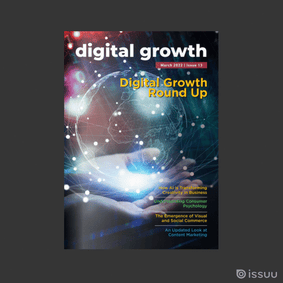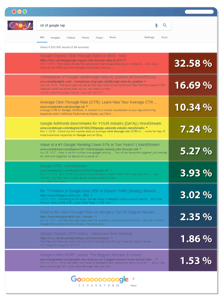Many have been wondering about the state of email marketing and if it’s still relevant in the vast, modern landscape of digital marketing. These questions are almost rendered moot when you look at the stats and facts. You see, email marketing is still an integral part of our lives. In fact, there are over 5.5 billion email accounts across the world, and that number increases every day.
However, is email marketing still fundamental to digital marketing success? The answer is yes. However, there is no success without a planned strategy. Email content needs to be personalized, automated and tailored to suit an individuals needs, interests and where they are in the buying cycle - driving them to take specific actions as they move through the sales pipeline.
Recently, Validity and Demand Metric conducted an in-depth email marketing study that has opened up the discussion around email marketing and its importance in the digital age. The organization examined which email tactics marketers are currently using, which are working, what challenges they are facing, and how they can better their email marketing efforts. The report summarizes the latest survey results and shares insights from more than 450 study participants.
Below, we take a look at what was discovered through this study and provide our own insight into the benefits and challenges that come with email marketing in 2021.

1. The Email Marketing Landscape Today
Email marketing is still one of the top performing channels for digital marketing however, according to the study mentioned above, only 8% of study participants reported that their email marketing strategies improved over the past year.
So, if email marketing is such a powerful tool, why is this statistic so low?
It is important to note that a variety of factors influence the success of email campaigns and this includes audience segmentation, content relevance and personalization. In order to have a successful email marketing campaign you need to do the research, understand your lead data, and create content that appeals to your leads and provides them with the right message, at the right time.
With the rise of Customer Relationship Management software such as HubSpot, email marketing strategy has become more streamlined and effective. These platforms provide automation, personalization and segmentation while measuring and tracking the success of each email campaign. This tactic allows for greater lead generation, conversion and customer retention. Therefore, in order to use the email marketing landscape to the best of your ability, you need to consider investing in digital transformation tools that optimise the process for the digital age.
This kind of strategic email marketing forms part of today's Inbound Marketing strategy. Inbound marketing is a process of communicating with high quality leads by providing them with information that they actually want to be informed about as opposed to the "spammy" email marketing of the past.
But sending out automated campaigns is not just about typing up a quick email, sending it to a mass audience and asking recipients to make a purchase - today, email marketing requires strategy, lead nurturing, and quality content designed to drive an action.
The goal of any email campaign is to get the user to take a specific action, and if the user does not open your email, does not understand the messaging of your mail and cannot find your Call-to-Action in the email - then your campaign will be for nought.
And this is why you need to understand your email objectives and create campaigns tailored to driving leads to take action.
Understanding Your Email Marketing Objectives
As stated previously, email marketing requires clear objectives, measurement and analytics in order to deliver the best possible results. In order to achieve this you need to communicate with prospects and clients in a strategic and personal way in order to build awareness and keep you top of mind at all times.
According to the study by Validity and Demand Metric the top objectives for email marketing are:
- Communication with customers (71%)
- Build brand awareness (69%)
- Communicate with prospects (64%)
- Generate Revenue (52%)
- Capture lead data (29%)
The overall percentage of marketers who reported “building brand awareness” as a key objective in 2020 versus 2019 increased, while the percentage of B2C marketers who report “revenue generation” as a key objective fell by 35%.
You see, today, marketers are using email marketing to build brand awareness, which at its core, is about building trust and nurturing relationships. This is especially important after the year that was 2020. The consumer is now more cautious than ever and wants to develop relationships with brands and learn more about a brand before making any purchase. But of course, email marketing objectives do vary based on company type.
Email Objectives Based On Company Type
Of course, email objectives vary based on the type of business using this tactic and this is noticeable when it comes to B2B and B2C email campaigns.
Both B2B and B2B/B2C companies report that brand awareness and revenue generation objectives have increased since 2019. However, for B2C companies and non-profits, the percentage of marketers who report revenue generation as a key email marketing objective has actually fallen dramatically since 2019.
The key takeaway is that B2C companies are now focusing their efforts on creating brand awareness and lead nurturing in order to ultimately drive sales. Email marketing is no longer about “sell sell sell,” but rather a way to drive a consumer through the buying cycle.
So, now that we have an understanding of the importance of brand awareness and lead nurturing - let’s take a look at the challenges that come with email marketing and the best tactics to overcome these challenges.
Email Marketing Challenges and How To Overcome Them
One of the study’s main objectives was to discover the challenges marketers face when using email.
Top 6 challenges facing email marketers in 2020/2021 include:
- Competition for attention in inbox (42%)
- Poor Email Engagement (35%)
- Staffing/resource constraints (33%)
- Email deliverability (30%)
- Loads of data but unsure of how to use it (25%)
- Lack of tools to optimize and personalize emails (22%)
What stands out in the above is that marketers are unsure of how to optimise digital transformation tools to automate, personalize and segment email campaigns for better outcomes. The solution lies in Customer Relationship Management software as discussed previously. With CRM technology you are able to track your campaigns, measure their success and shortcomings, and amend them to ensure the best possible outcomes
By monitoring the success of your campaigns with a CRM platform you are able to gain greater insight into your audience, and this data provides your marketing team with the opportunity to improve campaigns accordingly.
Use your email performance data to run A/B tests that are designed to show you what email content your recipients engage with, and amend your strategy to suit what your audience finds more desirable. Analytics are vital and should play a part in your entire email campaign strategy. Without analytics, you will never reach and exceed your email objectives.
2. Inbox Placement Rates
After outlining the email marketing landscape as it is today, the study went on to research Inbox Placement Rate (IPR). This is the rate of emails that were delivered to the inbox rather than the spam or junk folder. Marketers can calculate their IPR by dividing the number of emails delivered to the inbox by the total number of emails sent.
IPR provides an accurate way to measure deliverability and as stated above - analytics and measurement is key to email marketing success. The study however, showed that less than one fifth of participants report their inbox placement rate at 90% or more.
So, what is working for those in the 90% or higher range?
Marketers who have inbox placements rates of 90% or more tend to be more invested in strategy and make use of various email tactics including:
- A/B Testing
- Email personalization
- List management
- Subject line optimization
- Reactive campaigns
- Artificial Intelligence
Once again, we see the importance of Customer Relationship Management platforms for email marketing, analytics and tracking.
With CRM tools in place, email marketers are able to do all of the above in a single location and with insight into lead data - they are able to design and implement the most effective campaigns - leading to higher IPRs.
Now that we understand how to better IPRs, let's take a look at email open rates and how to optimize yours for greater results.
3. Email Marketing Open Rates
An email open rate refers to the percentage of subscribers who open a specific email out of your total number of subscribers. Many marketers look to their email open rate to determine how successful their email marketing campaign is in general. According to the study, the percentage of marketers who report email open rates of 5% or less increased by 75% since the last study conducted in 2019.
While some debate currently exists about the quality of open rate as a metric, the reality is no other action can occur that matters to email marketers unless emails are actually opened. So at the end of the day, this metric is important to know and learn from.
And, of course, this metric can lead to click through rates.
Open Rates and Click Rates
Clearly an email open rate is important but opening an email is not the be all and end all of the email marketing game. It all comes down to successful conversion and this is why click rates are vital. An email click rate (also known as an email click-through rate) is the percentage of people who click on a link or image within an email.
As like those with a higher open rate, those with higher than average click rates are getting this results because they use tactics and tools to better their processes. Once again we see the importance of digital technology.
CRM and related digital transformative technology is a vital component of any email marketing strategy. And according to the study, marketers who report the use of technology to understand inbox placement are more likely to report higher open rates and click rates.
CRMs are also able to personalize and automate the email marketing process which is vital in this day and age.
Open Rates and Email Subscriber Preference
Marketers who wish to create a great customer experience must focus on every touchpoint customers have with brands, including email. There is a strong relationship between how much marketers know about their subscribers and email open rates. So, not only do you, as a marketer, need to segment your audience to understand what information they require through your emails - you need to understand their preferences when reading an email.
The study found that it is important for marketers to know:
- What time they are opening emails
- Which devices email readers are using
- Which browser they are using to open emails
- Geolocation
In order to know all of the above (and more), CRM digital technology is key.
4. Email Marketing Strategy for 2021
Today, thanks to digital technology we are able to gain greater insight into the consumer and create personalized and automated campaigns to reach the consumer where they are at in the buying cycle.
The report discussed above helps us understand today’s email marketing challenges and explains what tools we can use to better our efforts. Essentially, email marketing in 2021 comes down to: monitoring your data, focusing on clear and personalized strategies, understanding your leads and where they are in the buying cycle and capitalizing on subscriber preferences to ensure high open rates and ultimately more conversions.
And in order to do this, digital transformative technology is key!
In Conclusion
There's a common misconception in the digital marketing world, with many commentators suggesting that email marketing is dead. At Nexa we believe and understand the power of Inbound marketing when implemented strategically. We believe that email marketing has most certainly changed over the years - and for the better! If you put time and effort into your email campaigns and ensure you have strategies in place for lead generation through this platform, you will attract more leads in 2021.
Does your business need a regular flow of qualified sales leads? Email marketing is the way forward and we are here to help.
Nexa has been generating highly qualified sales leads for businesses of all types for almost a decade. We have both the experience and track record to help businesses in all industries generate highly qualified sales leads.
Contact Nexa for all your email marketing and lead generation needs.
%20(1).png?width=2701&height=607&name=BRC_NEXA_LOGO_BLACK%20%26%20VIOLET%20(1)%20(1).png)
%20(1).png?width=2701&height=607&name=BRC_NEXA_LOGO_WHITE%20(2)%20(1).png)















Comments